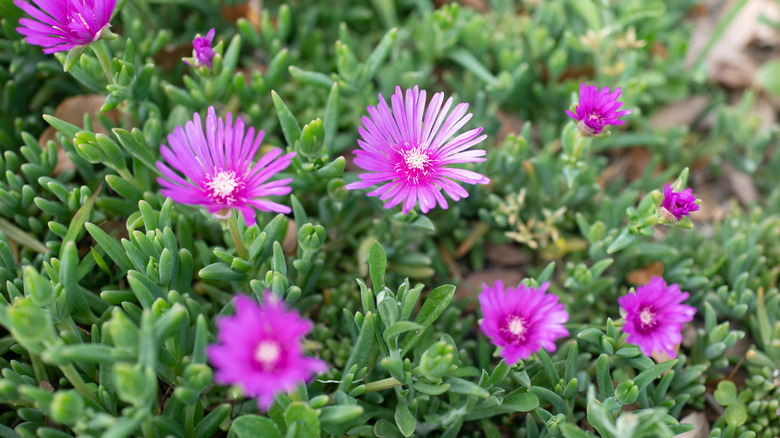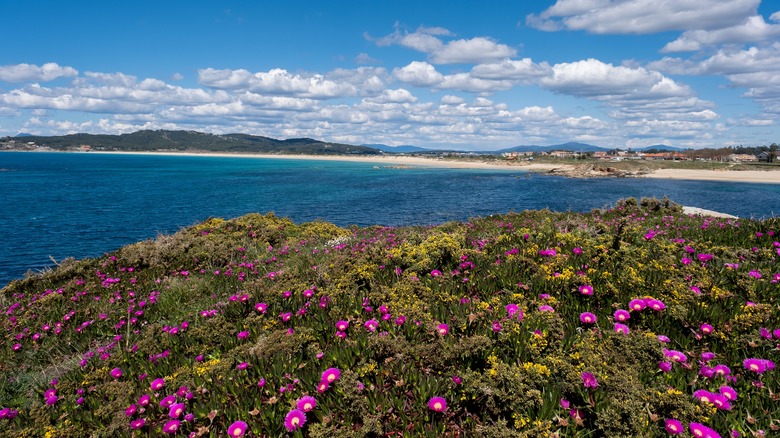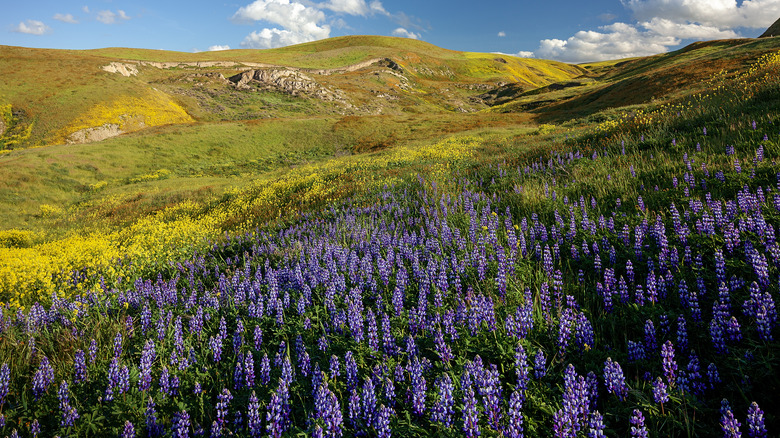Don't Let Salty Ice Plants Ruin Your Soil, Plant This Instead
Ice plants grace the plant nurseries every spring and summer, and they can paint fields and roadsides beautiful colors with their bright blooms. As tempting as they may be to put in your garden, you're better off keeping them in pots or not planting them at all. These flowers are resilient — but not in a good way — and will choke out everything in the vicinity. Not only that, but they'll also make the soil salty as if to make sure they're the only plants that will be around. A good alternative is the beautiful lupine. They're native to the areas where ice plants are the biggest problem and will help restore the soil and the local ecosystem.
There are tons of lupine varieties to choose from, each of them bringing benefits to your garden. They're in the legume family, so they can add nitrogen to the soil. Since some species are native to the U.S., they host many native pollinator species, making them an ecologically thoughtful choice.
Why you should ice out the ice plants
How can such a pretty plant be so bad? It's largely due to their being native to South Africa and not the United States. They can be found throughout the coast of California, so you might think they're native. However, since it's not a local plant, it's not a host for any native insect species. Pollinators and other insects rarely visit ice plants, making them essentially useless in terms of function. They have a vigorous growth rate, allowing them to spread across open land easily. Their growth habit will overtake native plants and make it impossible for the natives to reestablish themselves. There's also the added problem of them making the soil too salty. Salty soil prevents seeds from sprouting. So, if there's any real estate available in a field of ice plants, native seeds still won't stand a chance.
Ice plants were first planted to stop erosion around railroad tracks, but that has proven a bad idea. They have shallow root systems that don't help with erosion but can do the opposite. If they grow too much and become heavy, they can cause the soil to erode off of hillsides, creating a landslide. The leaves they drop are slow to decompose, so the dry leaves that are left to sit indefinitely fuel the fires that frequently burn the lands they grow on.
Lupines do everything you want ice plants to do
Lupines check off everything on the list: they're native, they host native insects, they improve the soil, and they even reduce erosion. It sounds a lot like what people wanted ice plants to be! Even though they're not similar in size and looks, they're a beautiful alternative that will benefit the environment rather than alter it for negative reasons. Lupines are native to mountainous regions and will spread over flat areas. The downside to lupines is that they're invasive in the eastern half of North America; however, many varieties are native to the western half, where ice plants are a problem.
Lupines can be annuals or perennials, depending on the variety. Some are short and grow out rather than upward, while others can grow up to 5 feet tall. They also attract hummingbirds and a wide variety of native insects, including many kinds of bees, providing food and shelter to the species that ice plants evict.


